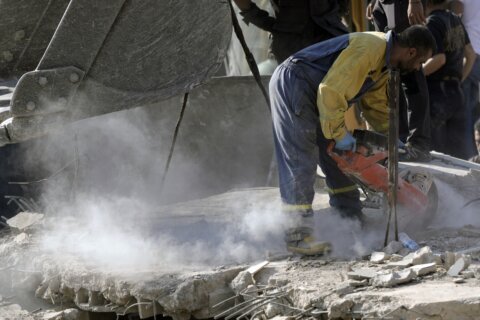Known for its proximity to great colleges and its moderate climate, Raleigh tends to appeal to a wide range of buyers, from families to retirees. Ryan Fitzgerald, a real estate agent and the owner of Raleigh Realty, has a decade of experience in the Raleigh housing market, and he says that the City of Oaks has been attracting buyers for years because of its affordable prices and access to jobs.
If you’re thinking of buying a home in Raleigh, whether to house your family or rent out for income, it’s important to have a solid pulse on the market. Here’s what you need to know about Raleigh real estate today, based on key data from the U.S. News Housing Market Index.
[Boston Housing Market Forecast]
How the Raleigh Housing Market Changed in 2022
Single-family home construction slowed in Raleigh in 2022. The year started out trending upward, peaking in March with 1,530 housing permits issued, the highest for the market in at least a decade. In February 2023, there were 929 single-family detached housing permits issued, compared with 1,358 in February 2022, according to data from the U.S. Census Bureau. That’s about a 31.5% decrease year over year.
Multifamily home permits in Raleigh were a different story. In February 2023, there were about 973 permits issued for multifamily homes, compared with about 729 in February 2022. That’s a year-over-year increase of a little over 33%.
Fitzgerald says that higher mortgage rates and their potential impact on buyer demand have caused a bit of a slowdown on the new construction front. “The smaller, local, hyper custom builders are cautious when it comes to purchasing land because they’re a little bit nervous,” he explains.
Raleigh Housing Supply and Demand
Fitzgerald says buyer demand has cooled a little bit in Raleigh, and homes aren’t moving off the market as quickly as they were a year ago. However, “If the home is priced correctly in a desirable location and the home is in good condition, you’re going to see multiple offers,” he says.
As of February 2023, housing supply in Raleigh sat at a 2.5-month supply, based on data from Redfin. That’s a year-over-year increase of a little more than a month. However, that 2.5-month supply is well below the 6-month supply that’s commonly needed to even out the housing market and fully satisfy buyer demand.
On a national level, housing supply sat at 2.6 months’ worth of inventory in February 2023, so Raleigh wasn’t too far behind. But despite a pretty clear lack of inventory, Fitzgerald says that bidding wars in the city have slowed.
Not only that, but buyers aren’t coming in with offers as high as they were a year ago. That, says Fitzgerald, has a lot to do with mortgage rates.
“People got used to those rates that were so low, and now they feel like they’re not getting a good deal,” he explains. Some buyers, says Fitzgerald, are trying to wait things out until rates fall.
Meanwhile, the rental vacancy rate for Raleigh reported for December 2022 by the Census Bureau was 6%, representing a year-over-year decrease of 1.8%. The national rental vacancy rate that month was 5.8%, up 0.1% from a year prior.
For the week ending April 14, mortgage applications decreased 8.8% from a week prior, according to the Mortgage Bankers Association’s Weekly Mortgage Applications Survey. On an unadjusted basis, the Market Composite Index, a measure of mortgage application volume, decreased 8% compared to the previous week. That same week, the average contract interest rate for 30-year fixed-rate mortgages with conforming balances increased to 6.43% from 6.3% a week prior.
It’s also worth noting that in January 2023, consumer sentiment dropped 2.3% on a year-over-year basis to 64.9, according to the Survey of Consumers from the University of Michigan. In January of 2022, it was 67.2.
[The Most Undervalued Housing Markets in the U.S.]
Median Home Price in Raleigh
The median home price in Raleigh was $410,000 in February 2023, according to Redfin data. That’s a 2.5% increase from a year prior. On a national level, the median home price in February was $387,000, down 0.3% on a year-over-year basis.
Fitzgerald has seen the price of homes increase in Raleigh, and he attributes that to a lack of inventory. However, he also notes that sellers are now being more flexible on price. Often times, he says, they’re willing to come down or at least help buyers with closing costs.
Meanwhile, the median rent price in Raleigh was $1,723 in February 2023. That’s an increase of 3% year over year. On a national scale, the median rent price in February 2023 was $1,976, up 4.9% from a year prior.
Data firm Black Knight shows that 0.3% of homes with mortgages in North Carolina experienced foreclosure activity in January 2023, up 0.1% from a year prior. Delinquency rates remained flat on a year-over-year basis and were measured at 3.2%.
Interest rates for 30-year mortgages sat at 6.26% as of February 2023, representing a 2.5% year-over-year increase, according to Freddie Mac’s Primary Mortgage Market Survey. As of April 13, the average contract interest rate for a 30-year fixed, conforming mortgage was 6.27%, according to Freddie Mac.
Fitzgerald says that today’s mortgage rates are becoming the norm, and some buyers are getting used to them. He also thinks mortgage rates will largely stay where they are today for the remainder of 2023.
Unemployment Trends in Raleigh
Raleigh non-farm employment rose by over 36,000 jobs in February 2023 on a year-over-year basis to 712,000. In January 2023, the unemployment rate in Raleigh was 3.1%, according to the Bureau of Labor Statistics. That’s the same level it was at a year prior. The national unemployment rate in January 2023 was 3.4%, down 0.6% year over year.
[Read: The Guide to Escalation Clauses in Real Estate.]
Builder Confidence in Raleigh Is Neutral
In March 2023, builder sentiment in Raleigh was 50 out of 100, according to the National Association of Home Builders (NAHB)/Wells Fargo Housing Market Index. That’s a notable drop from a year prior, when builder sentiment was 81. Builder sentiment is negative at values below 50 and neutral at 50. It’s positive at values over 50.
The Architecture Billings Index, which is an economic indicator for nonresidential construction activity, was rated 47.3 in February 2023, down 11.3% year over year. A score of 50 represents no change from the previous month, a score above 50 indicates an increase in firm billings from the previous month, and a score below 50 means there was a drop in firm billings from the previous month.
Raleigh Real Estate Market: Predictions
Fitzgerald thinks Raleigh properties will appreciate modestly in price over the next year. He also expects inventory levels to stay roughly the same.
Of course, mortgage rates will be the big question mark. But buyers are likely to adjust to today’s rates, and Fitzgerald doesn’t see them hurting the market.
All told, Fitzgerald feels that Raleigh real estate is worth buying today, even with mortgage rates being higher. As he explains, “Even during the housing recession, Raleigh actually still appreciated during the worst real estate market of our generation.”
A big part of that stems from the fact that Raleigh has a very high inbound migration. Large companies are setting up shop in Raleigh, and people are moving there due to the affordable cost of living coupled with employment opportunities. Plus, as Fitzgerald says, “The weather’s nice. I think that plays a part.”
More from U.S. News
What Is a Mansion? Everything You May Want to Know
Contingent vs. Pending and What It Means for Buyers
How Much Does It Cost to Sell Your Home?
Raleigh Housing Market Forecast originally appeared on usnews.com







